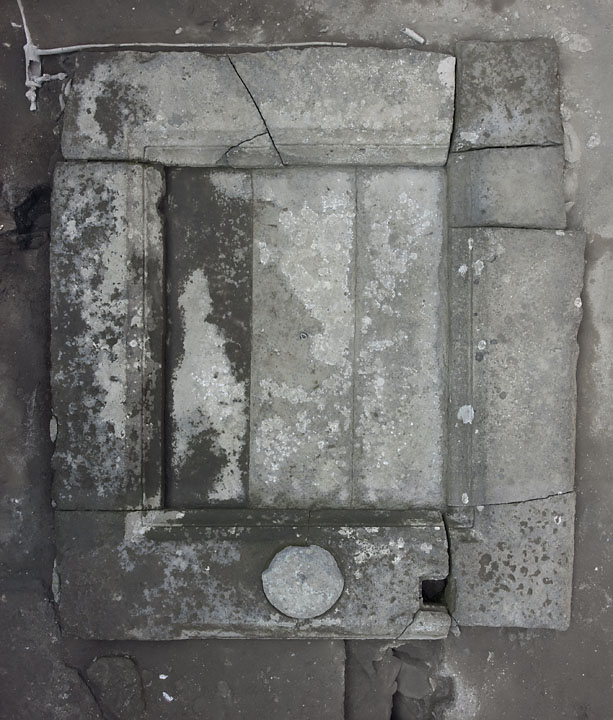Impluvium
Description
Renée Forsell
The impuvium is made of tufa. The floor is made out of three blocks placed NS. The rim is to the N, W and S side is made of long slabs. The E side however is made out of four slabs, which are not equal in length or width. The slabs have a facetted inner profile. Based on the profile Fadda has placed it in her group B1 dated to the second half of the 2nd century and the beginning of the 1st century BC. However the impluvium seems to be re-used in its present position, as it's different parts does not fit properly, the side slabs being of different width. The S slab is also facetted on the outside from its E edge and 0.83 westwards. There are cracks in both N and S slab.
The S slab contains the mouth of a cistern with a lid still in situ. There is also a square cleaning-hole where the slab abuts to the corner slab. The rim of the hole suggests that there was once a lid on it. Inside the cleaning hole two terracotta pipes are visible, one leading towards the cistern, the other leading S. There is also an opening towards the NE for the overflow water of the NE drain.
In the middle of the impluvium floor there are remains of a lead pipe that would have supplied a fountain with water. In the W there is a small hole in the side slab where the overflow water could exit into the W drain.
Bottom slabs: l. 1.97; w.: E 0.55; C. 0.63; W 0.53
Lead pipe diam 0.04; located 0.96 from the S edge of bottom.

